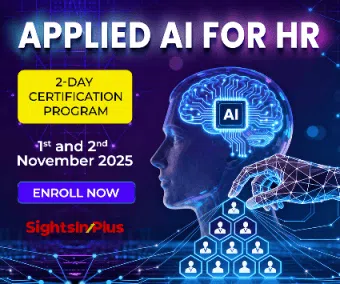It is important to understand what employees are looking for in return for their decision of which company to join and stay with. There are a variety of returns people receive from work. They are categorized as total compensation and relational returns.
The relational returns (learning opportunities, status, exciting and challenging work, lifestyle, and so on are psychological. Total compensation returns are more transactional. They include pay received directly as cash (e.g. base, incentive cost of living adjustments) and indirectly as benefits (e.g. pensions, medical insurance, programs to help balance work and life demands. Therefore, pay comes in different forms and programs and it can be designed in a wide variety of ways.
We will briefly discuss some important non-cash and relational benefits if planned well can motivate people to deliver excellence in performance and repeat it on a year-on-year basis. The non-cash benefits are designed from the perspective of attracting, motivating, and retaining the right talent. If all three are integrated well they produce what every company desperately needs: first-class human assets equipped with advanced competencies. They make people feel valued, give them space to grow, and show them the impact they create on the organization.
Non-Cash Benefits: Determination Approaches
The three main approaches that are currently in vogue in the sphere of non-cash benefits are Innovation, Flexibility, and Harmonization.
Organizations are enlarging the scope of non-cash benefits and have begun to experiment with innovation. New dimensions are being added to certain benefits with the availability of innovative individual/group insurance benefits for life cover, health care, and wellness.
New benefits are also invented to cater to specific organizational problems like redundancy, redeployment, and relocation – outplacement services, reskilling, upskilling, and building marketable skills in the staff at the cost of the organization. New benefits are being added like overseas travel/education, free holiday travel, etc.
Organizations are realizing the need to be sensitive to tailor the benefits to suit the needs of individual employees rather than offer a common, standard package.
Harmonization is a process of bringing blue, and white-collar employees’ conditions of service into some kind of alignment. The objective is to have a single status for all employees. Though the harmonization process may extend to all conditions of service and even work practices usually it covers hours of work and a variety of benefits including transport (bus facility) catering, uniforms, medical care, and educational facilities for children.
Non-cash Benefits Practices
When non-cash benefits are implemented in a systematic manner they help in engaging employees. These benefits will help you receive instant recognition straight away. This means that people get recognition exactly when they should, pretty much on a real-time basis.
They are memorable – Being recognized in the workplace for example a lunch or a short trip leaves a lasting, more positive impact on employees. It makes a journey memorable.
Peer recognition program – Financially speaking you do not need a lot of money to set up such an initiative while benefits are countless: from better employee relationships and a lasting boost in engagement to increasing trust, productivity, performance, and much more.
They help engage employees in non-monetary benefits like time off for volunteering tangible rewards or team outings make for great talking points. They can be an excellent way for people to start a conversation and break the ice.
Well-practiced non-cash benefits: A non-cash benefit is any benefit that an employer pays for an employee that is of a private nature. Some of the non-cash benefits are: Rent-free house, vehicle for private use, free power water, and gas, telephone for private use, domestic help – cleaners, gardeners, guards school fees, below-market loans, free lunch in the canteen, and Meal vouchers.
Recognizing employees’ personal needs: This can be done in terms of making arrangements for on-site daycare and providing flexible work schedules and special equipment.
Private use of IT equipment: The company allows the private use of business hardware such as laptops, company cell phones, or tablets while the hardware remains the property of the company.
Personalize certificates and gifts: Offering personalized gifts and certificates for good performance. It should not be too frequent that it does not provide any motivation to repeat the excellent performance in employees.
Providing Career Growth, learning, and development opportunities: What a present-day knowledge worker needs is adequate opportunities to learn and grow so that he remains employable in the current competitive and technology-driven environment.
Providing an exciting and challenging work environment: so that he can put all his existing skills to good use.
Appreciating good performance: A manager should feel that he is a part of the team and his contribution is being noticed.
Providing regular feedback: As Ken Blanchard author of One Minute Managers says, “Feedback is the breakfast of champions” i.e. they want to know how they are delivering.
Soliciting employees’ opinions: In order to involve them in decisions that affect their jobs.
To conclude, If non-cash benefits are planned and executed with the right intention, they can offer many benefits to both employees and employers in terms of enhancing motivation, improving performance, and productivity, improving retention, loyalty, and commitment, boosting engagement, satisfaction, and well-being, increasing creativity, innovation, and problem-solving, and also reducing costs.



